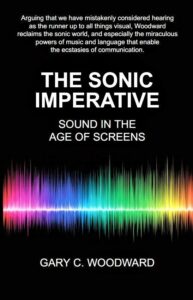The makers of some of the marvelous devices that we purchase in order to hear great sound want us to believe that all the magic is because of their equipment. But its not that simple.
We usually think our audio gear is the primary sources of the sound environment we cherish. Many of us can’t resist joining the never-ending chase for better amplifiers, speakers, virgin vinyl, digital-to-analogue converters and the like. And there is no shortage of companies and marketing experts who are happy to feed our search for audio perfection. But the ostensible requirement for “good” or “high end” equipment ignores the huge effects that spaces have on the sounds that reach our ears.
 For Dennis Foley, the wise and sometimes frustrated acoustical expert who offers short videos on YouTube, room size is the single most important variable in determining how well or badly something sounds. The folks that come to him for help in producing great sound usually want to talk about their $3000 turntables, $6000 amplifiers, or their rare English speakers–the same kinds used as monitors in recording studios. But he wants to talk about the usually inadequate amount of space where they will be used. Roughly the ideal room for music should be at least 20 feet wide and 21 feet long, with a ceiling height of 11 feet. And things only get better if there is even more volume.
For Dennis Foley, the wise and sometimes frustrated acoustical expert who offers short videos on YouTube, room size is the single most important variable in determining how well or badly something sounds. The folks that come to him for help in producing great sound usually want to talk about their $3000 turntables, $6000 amplifiers, or their rare English speakers–the same kinds used as monitors in recording studios. But he wants to talk about the usually inadequate amount of space where they will be used. Roughly the ideal room for music should be at least 20 feet wide and 21 feet long, with a ceiling height of 11 feet. And things only get better if there is even more volume.
Why does a room’s characteristics trump the relatively small qualitative differences between inexpensive and expensive audio equipment? It gets complicated, but most rooms are simply too small to accurately reproduce a full range of auditory content. For starters, virtually every modest-sized space has a resonant frequency, meaning a particular sound pitch it “likes” to amplify. For example, I know a pleasant local restaurant with a great menu and only lit by candles. All of its small rooms have a soft romantic glow: a perfect visual representation of what is meant by “fine dining.” Yet this old inn actually sounds like a Chuck E Cheese on a Saturday afternoon. The problem with the restaurant is that its “intimate” small spaces contain a lot of hard surfaces or old-fashioned glass windows. They can’t help but reflect and amplify sounds at certain frequencies. In one especially regrettable room, the spaces love the lower frequencies of male voices—especially baritones. Give a male patron several glasses of wine and a seat in one of the few tables, and he can become the acoustic equivalent of a fire alarm. Deafening. In slightly more technical terms, the room’s “mode” peaks at around 400 Hz. It loves sound in this range and is helped by very reflective glass. Your rooms have different modes. You can hear them if you run a “sweep” of a tone-generating oscillator in them. The mode appears when a given frequency on the oscillator gets noticeably louder.
Many times the first mode in a room is in the bass range, where too much energy and long sound wavelengths have no place to go, so they just build into a mass of indistinct sound. A low note can produce a wave that is 20 feet long. The problem of this too-big-for-the-room energy is that it spills out of its path and makes a sonic mess. A frequent result is the head-rattling boom of “one note” bass. Our ears have been trained to accept these non-musical artifacts if dead thuds as the real deal. But “muddy” base is not very musical.
In these situations, great equipment won’t help. Something that will may seem to be counterintuitive. Your music in a modest sized room will probably sound better if you listen at a more modest volume level. As Foley would say, if you listen, a room will tell you what it can handle.
![]()

